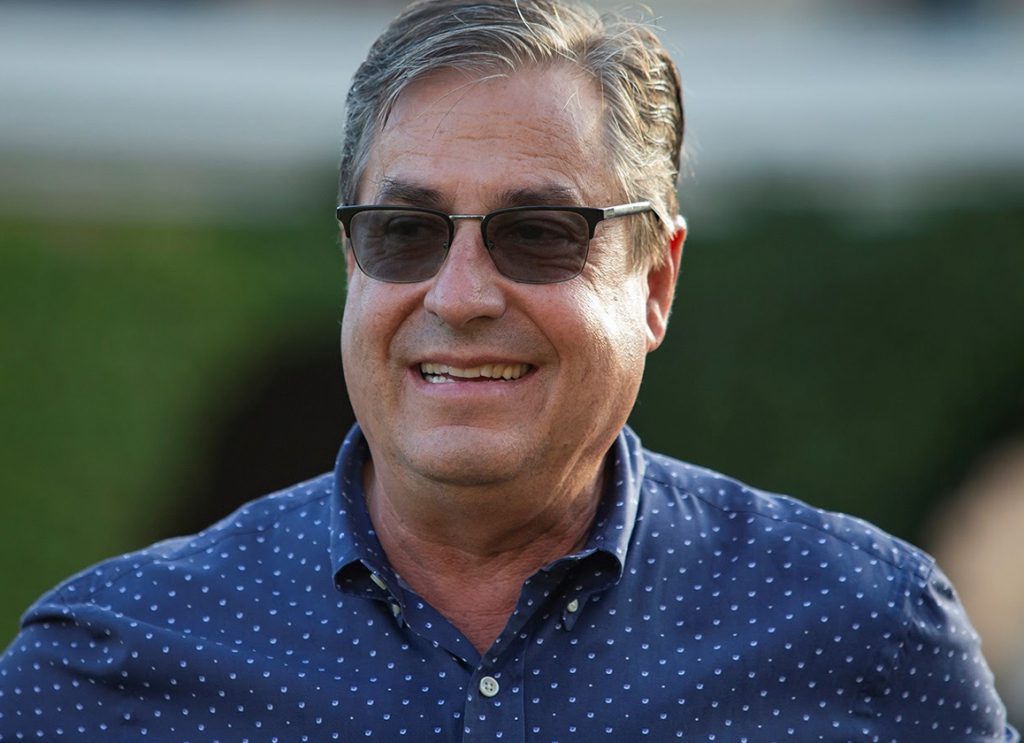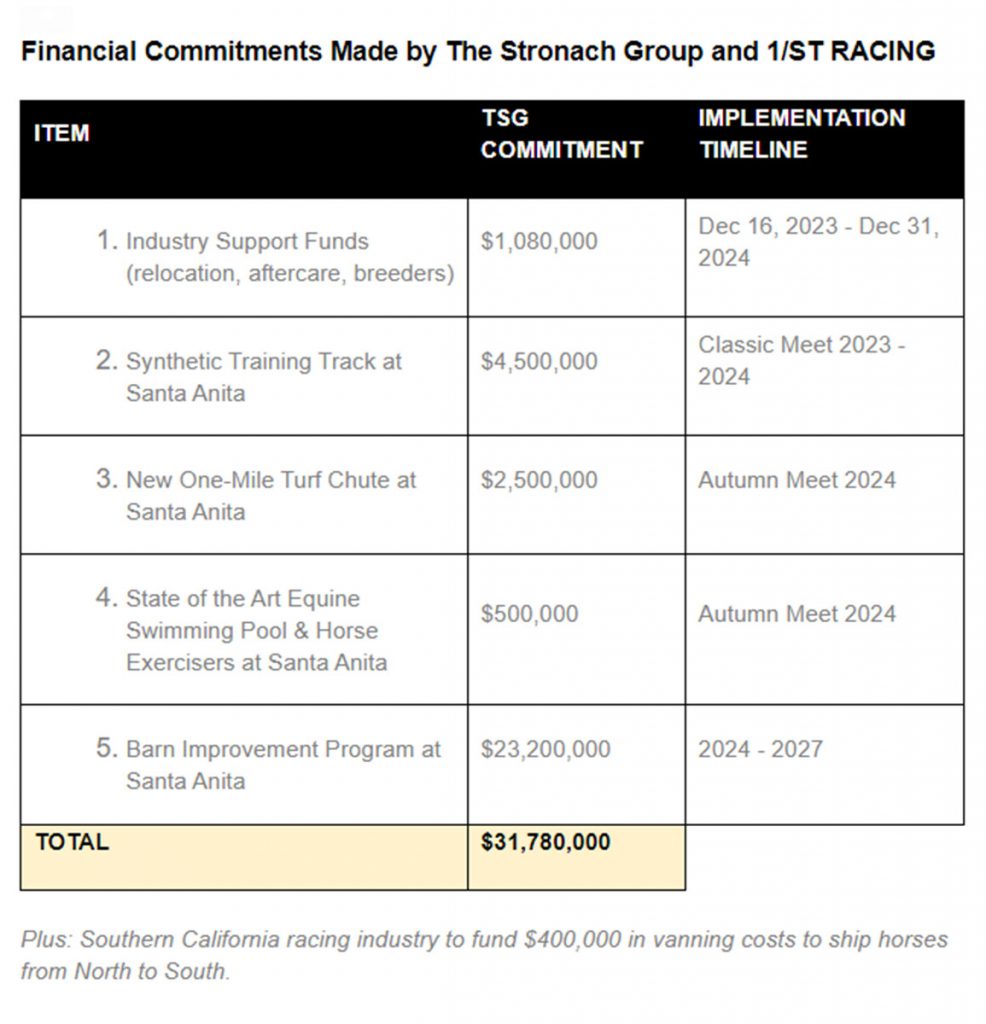The precarious, up-in-the-air future of California racing and whether or not the state can continue to support two geographic year-round circuits was made no clearer after Thursday's California Horse Racing Board (CHRB) meeting. The 3 1/2-hour session was dominated by discussion of competing North-versus-South plans that both tried to carve a sustainable path forward while underscoring the dire circumstances that face the industry with the June 9 closure of Golden Gate Fields looming like an unavoidable asteroid.
Although the CHRB concluded the meeting–which featured testimony that was at times emotional, hopeful, angry, and even ominous–without taking any voting action on the situation, proponents behind ideas that would turn one of the NorCal fairs locations into a venue capable of hosting nearly year-round Thoroughbred racing had a decided edge in turnout and vocal support.
In part, that's because those NorCal-based supporters enjoyed a home-track advantage, because the Jan. 18 CHRB meeting was held at Cal Expo in Sacramento, the preferred location for a year-round venue as outlined in a presentation by the California Authority of Racing Fairs (CARF).
But the locale wasn't the only factor, as much of the back-and-forth debate also came across as a referendum about larger racing entities allegedly trying to trump smaller ones, whether or not 1/ST Racing and Gaming–which owns both Golden Gate and Santa Anita Park–will be good for the state in the long run, and whether or not the Thoroughbred Owners of California (TOC) organization speaks for all the stakeholders in the state or just the higher-end stables based in SoCal.
Yet it was telling that no fewer than 26 industry stakeholders spoke before the board on this wide-ranging, controversial North/South topic during the public commentary period, and not a single one voiced support for an alternate plan proposed by TOC in conjunction with executives from Santa Anita Park and Del Mar Thoroughbred Club.
That TOC-backed concept would consolidate all commercial-track racing in the state at SoCal. The goal would be to maintain level purses there under a simulcast revenue “redirect” plan that would also try to accommodate displaced Golden Gate outfits by creating more opportunities for lower-level horses to race at Los Alamitos Race Course, dropping the “claiming floors” at both Santa Anita and Del Mar, and establishing “relocation allowances” for stables that had to pack up and move.
The TOC's takeaway message was that even though it is in support of any “feasible and viable” plan to keep year-round racing afloat in NorCal, a danger exists in the form of increasing economic pressures in the South that, in turn, could contribute to millions of dollars in purse overpayments at Santa Anita and Del Mar that would likely erode the overall California product.
“With the closing of Golden Gate, can we continue to support two full-time circuits? This is a fair question,” said Bill Nader, the TOC's president and chief executive officer.
“We are running out of time,” Nader continued. “If there is agreement on one point, I think it would be that the latest possible decision on the allocation of 2024-25 race dates would be at the CHRB meeting in March. This would help re-establish stability and certainty for the many who are looking for answers.”
Nader's tone was largely somber and straightforward as he discussed the TOC's rationale with executives from 1/ST Racing and Del Mar presenting alongside. But at times his comments were met with derision and catcalls from opponents, who greatly outnumbered the supporters of the TOC's plan.
Many of those same folks also cheered and applauded any mentions of trying to save year-round NorCal racing.
At one point, CHRB chairman Gregory Ferraro, DVM, asked audience members to respect decorum so that the outbursts wouldn't bog down the meeting. But his request to “stop the clapping and the booing” went largely unheeded.
Larry Swartzlander, the executive director for CARF, detailed his organization's work-in-progress plan to install a seven-furlong track inside the current main mile oval at Cal Expo, which for years has largely hosted Standardbred racing outside of the short season that the Thoroughbred fair races in Sacramento.
Swartzlander said Cal Expo would likely race 103 Thoroughbred dates in the future (on the outer oval), with cards scheduled roughly twice weekly when the other NorCal fairs weren't in season.
“We are looking at funding from horsemen, CARF, and potential grants,” Swartzlander said, admitting that his plan is just in its initial stages because horsemen in California have only known since July about 1/ST Racing's plan to close Golden Gate.
As a result, Swartzlander was light on specifics such as firm costs and a timeline.
Swartzlander said next up is a Jan. 26 meeting with the Cal Expo board of directors seeking conceptual approval.
“If the board does decline to approve racing at Cal Expo, we will move to Pleasanton,” as a potential year-round NorCal racing home, Swartzlander said. “The Pleasanton board is very strongly in support of racing, and if I have to make one commitment to you, Pleasanton will race.”
When CHRB executive director Scott Chaney pressed Swartzlander for cost details, Swartzlander gave an estimate for state-owned Cal Expo's overhaul in the $1- to 1.5-million range.
Chaney expressed surprise at such a low figure.
“I'm not going to lie. I think you're very low,” Chaney said.
“One of the things that concerns all of us is uncertainty right now,” Chaney said. “We're, I'm sure, bleeding horses every day because there's no clear plan. We don't know what we're doing in the future [and] I am concerned about timeline and cost at Cal Expo. I just think it's unrealistic. I know it's unrealistic, to be honest.”
Commissioner Wendy Mitchell said she appreciated CARF's efforts at coming up with a plan, but also expressed doubts.
“I don't see how any of this lines up,” Mitchell said. “And I guess my concern from a regulatory or from the industry perspective is I don't want to create false expectations for people that are really unattainable…. I don't mean to be negative or a doubter, but I'm trying to be realistic and pragmatic about what the industry is facing.”
Commissioner Damascus Castellanos said that the time crunch and uncertainty was caused by 1/ST Racing, not CARF.
“The industry was kind of slow to get going on this whole thing,” Castellanos said. “We would be so further along if [1/ST Racing] came to us with proper notice [and] the groups in this room today probably could have gotten together and been done with this plan.”
Ian McLean, an owner and breeder, said during the public commentary session that the CHRB itself is partly to blame.
“If I'm not mistaken, this board works for us. We don't work for you,” McLean said. “The one thing that I've asked this board for years and years is to give us more attention in NorCal. Give us more time. Make us more important. Listen to what we have to say, and make us feel like we matter. And I don't think that's been done.”
McLean said the CHRB's response to CARF's proposal is too focused on negativity and “looking for the holes” in the plan.
“And I agree that you should look for the holes,” McLean continued. “But you should also look for 'How could we patch those holes?'”
Jamey Thomas, a third-generation NorCal trainer, advocated for the CHRB taking a slower approach.
“CARF needs time to get all this situated and done,” Thomas said. “It's kind of been a rush job. They're rushing us, forcing us, to get this stuff done faster than it can be done. Again, if they had let us know a year ago, by now everything could have been in place, we would have had a place to run. And we will have a place to run. The thing is, we just need the time.”
Tom Bachman, who said he's been breeding and selling Thoroughbreds in California for 40 years, underscored that the state's bloodstock industry works on a different timeline.
“My concern as a breeder is that the decisions I make today, the results are three or four years away when I've got to sell,” said Bachman. “So it's very difficult to have faith that three or four years from now there's sustainable racing in California. So my breeding now has moved to Kentucky.”
Johnny Taboada, who was a TOC director until last Sunday, when he was one of three directors to resign in protest over the TOC's proposed statewide consolidation, told the CHRB that the NorCal fairs are in jeopardy without a year-round track in the region.
“If you rush into the decision without giving the chance for the NorCal [entities to come up with an plan for a] circuit, you're going to not only put people out of work, you're going to be closing the fairs as well,” Taboada said. “If we don't have the dates assigned to the North and therefore the money goes to the South, that will be the end of not only NorCal racing, but also the fairs.”
CHRB chairman Ferraro wrapped up the session by saying that this is only the first major discussion on an enormously important topic.
“We needed your information. We need your input,” Ferraro said. “I'm telling you, it's not easy sitting in this chair looking at this situation. It is almost a no-win situation for this board. We're going to do the best we can to do right by everybody. But obviously, we have no decision-making [Thursday], so we will have to end this meeting without a decision, and we'll see what happens over the next couple of months.”
The post Vocal Two-Circuit Supporters in Cali Come Out Firing in First of Many Expected North/South Skirmishes appeared first on TDN | Thoroughbred Daily News | Horse Racing News, Results and Video | Thoroughbred Breeding and Auctions.




